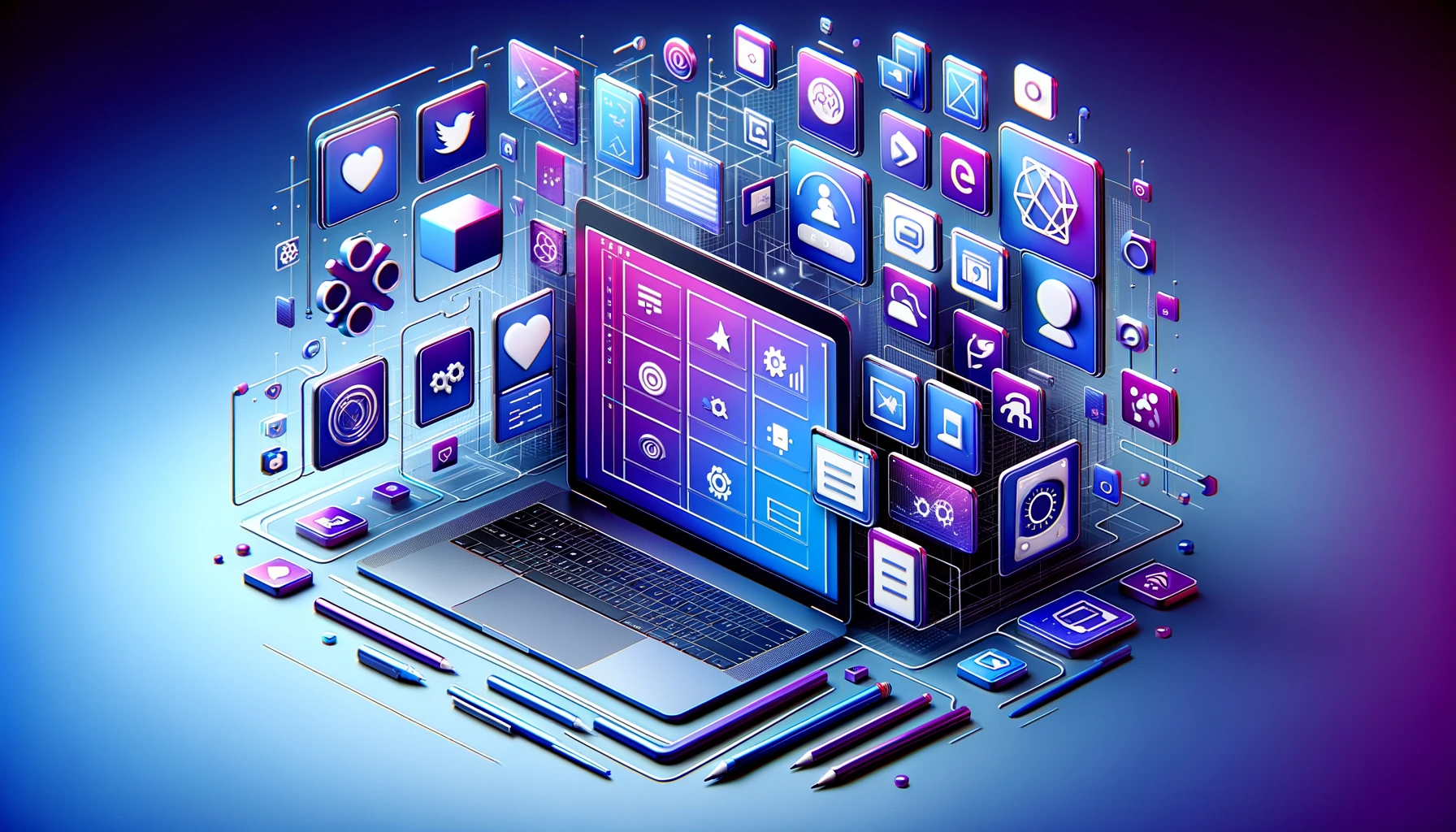5 Ways AiSDR Helps Your SDRs Power Their Inbound Sales Campaigns

SDRs build the bridge between inbound leads and SQLs. AiSDR cements this bridge and helps you scale
The amount of work sales development representatives (SDRs) put into inbound sales depends on the incoming leads and their level of intent. It’s much harder to predict than outbound tactics, and your SDRs are likely spending a lot of time crafting responses tailored to the specific concerns of inbound leads.
This is one reason why generative AI for sales has had such an impact. AI’s ability to create human-sounding content significantly speeds up the work of SDRs, leaving them with more room to add a human touch that nurtures lead relations.
But there are plenty more advantages of AI for inbound, which makes an AI tool like AiSDR invaluable for improving and accelerating your inbound sales campaigns.
Our previous article on AI in sales focused on outbound sales tactics. Now, we’re shining the spotlight on AiSDR’s ability to power inbound sales.
What is the role of SDRs in inbound sales?
To answer this question, it helps to first define inbound sales.
Inbound sales refers to the interactions with prospects approaching your business to inquire about your offerings. Your sales team works on inbound leads to keep them warm and moving down your sales funnel.
That’s where SDRs step in.
They take charge of qualifying inbound leads and identifying those who are a good fit for the company. They keep conversations going, nurturing the leads until they agree to an appointment with the account executive (AE) or the sales representatives who specialize in closing deals.
SDRs act as gatekeepers. They filter out leads, ensuring AEs are making the most out of their valuable time by handling only the later phases of the sales cycle, which generally require specialized skills and extensive experience.
SDRs also work on outreach campaigns, which is why if you ask yourself the question “What are inbound and outbound sales?”, you’ll return to the topic of SDRs. But generally speaking, inbound sales responds to incoming queries while outbound sales is the result of sales reps initiating contact with prospects.
How SDRs generate leads
Once you know the meaning of inbound sales and the role of SDRs, it’s time to discuss lead generation.
Generating leads entails cultivating interest in your offerings or attracting prospects to your business and building on their interest until they finally convert into a paying customer.
So how do SDRs generate leads?
First, they develop an ideal customer profile (ICP) that defines the characteristics of an ideal customer for a company. This helps ensure that SDRs reach out to or engage with the right prospects.
An ICP also enables SDRs to make the most out of tools like AiSDR’s Lead Discovery database, which contains the verified contact information of more than 700 million professionals and 35 million companies worldwide. Using an ICP, SDRs can easily filter out the right professionals or companies to contact.
After qualifying prospects, SDRs can get the conversation rolling, consistently sending follow-ups until the leads make it to the end of the sales funnel. This brings us to the next section, which discusses the evolving role of AI and its potential to aid SDRs.
AI’s evolving role in inbound sales
It’s no secret that an SDR’s work is getting harder. And the data backs it up.
Research suggests that SDRs now average 3.6 quality conversations (QCs) per day — a metric referring to lead interactions that dig up at least one key piece of qualifying or disqualifying information. Compared to 2014, this number is 55% less, representing a drop of around 10% per year.
The same research shows that high-growth companies commonly support their sales processes with more tech tools than slower-growing ones.
If you want to power up your SDR teams with the right tech, AiSDR is one option you can turn to.
How to establish sales with AiSDR
At the heart of the outbound vs inbound sales discussion and other industry issues lies the question of whether the sales team is effective at doing its job.
AiSDR is an AI tool that enables sales representatives to excel at what they were hired for—bringing in more earnings. In simple terms, AiSDR is an AI-powered SDR that takes on the inbound tasks of analyzing prospects, sending personalized responses, and nurturing leads down the sales funnel.
AiSDR introduces efficiency to an otherwise protracted and painstaking process, automating tedious tasks like poring through leads, examining their attributes, and filtering out those that match your ICP.
By delegating tasks to AiSDR, human SDRs have more bandwidth to focus on conversion. It also frees you from having to hiring more SDRs to your team, thereby increasing your headcount. And because AiSDR costs only $750 per month for 1,000 emails sent, you increase your team’s productivity exponentially without burning through your budget.
Here are the main things virtual SDRs like AiSDR can help you with.
Improved lead qualification and prioritization
AiSDR can work on large amounts of data and identify high-potential leads based on their profiles and interactions with your brand. It identifies patterns, makes predictions, and becomes even smarter as it continuously learns from your data.
With sales automation tools predicting which prospects are more likely to convert, your human SDR can focus better on lead engagement. Instead of wasting time on low-touch outreach, they can hone in on promising leads and provide higher-quality interactions. This increases the chances of converting leads into paying customers.
AiSDR also has a lead qualification feature designed specifically for inbound sales campaigns. The AI tool can connect to your HubSpot account or online intake forms, analyze leads, and nurture them down the sales funnel.
On top of that, AiSDR can book meetings between prospects and your sales reps or assign tailored nurturing sequences to leads that need more convincing.
Personalized engagement
Keeping messages personalized isn’t easy for SDRs who send out emails in bulk. AiSDR helps by generating tailored responses to prospects based on industry, position, company size, and pain points.
Tasks like this are no longer just a nice-to-have. 73% of consumers expect businesses to understand their individual needs and preferences, and 56% expect to receive only personalized offers. In contrast, while 74% of companies claim they’re able to deliver personalized customer experiences, only 14% say they do it very well.
The takeaway? There’s still room for improvement, especially when 60% of online consumers claim they would drop their loyalty to brands that fail to deliver tailored content.
Scalable follow-ups
The average nurturing sequence in 2022 contained 11.3 attempts, up from 7.3 in 2014. In other words, SDRs need to be more persistent now that prospects have become harder to convince.
AiSDR takes the work off SDR’s shoulders by automating follow-up emails. You can configure the AI tool to send personalized follow-up emails at specific intervals, as well as set the number of follow-ups for each sequence. This means that with AiSDR, no lead goes forgotten.
AiSDR can also segment leads into three categories (or any categories you see fit): introductory meetings, semi-qualified, and fully qualified opportunities. It can gauge a prospect’s readiness to buy and assign a nurturing sequence accordingly.
Dynamic content generation
Also known as adaptive content, dynamic content changes based on the profile and preference of the receiver. It usually combines adaptive scripts with static content. AiSDR delivers dynamic content based on an individual prospect’s behavior and preferences and their position in the buyer’s journey.
For instance, you can choose to send out bulk emails to bottom-of-the-funnel prospects with a specific part of the message offering a promotional discount that adjusts to the size of the recipient’s company while the rest of the email message stays the same for all recipients in the segment.
Dynamic content generation lets you combine personalization with bulk campaigns via contextual emails. These messages are specifically tailored to a lead’s position in the buyer’s journey, delivering messages that resonate (and convert!).
Real-time insights and recommendations
AiSDR can analyze lead behavior to distinguish who’s just looking to explore your product offerings from people ready to purchase. AI sales forecasting also helps you identify those ready to convert.
You can use these insights to modify your messaging and approach in real time — for example, by delivering a welcome message, real-time discounts, and tailored recommendations.
Predictive sales AI analyzes data and delivers instant results at a rate that no human SDR can match, taking your inbound sales tactics to a whole new level.
Get ready for the future of sales with AiSDR
Whether they’ve filled out your website form or sent you an email, inbound leads are already showing interest in your brand. It’s up to your sales team to turn warm leads into leads that are ready to purchase.
While some fear that AI will replace sellers, the current consensus is that AI is only a tool that helps sales representatives do their job more efficiently. They improve the way sales teams do research, prospecting, lead generating, and nurturing, especially repetitive, high-volume tasks.
There’s no better way to gear up for the future of sales than with AiSDR. AiSDR works alongside your team as an AI-powered SDR, freeing up their time by taking on tasks ranging from analyzing real-time lead behavior to personalizing email responses. It even has a feature designed specifically for inbound sales automation, one that qualifies leads and sends tailored follow-ups.
Book a demo to see how AiSDR can run your inbound sales.
FAQs
What is an inbound sales campaign?
Inbound sales is a strategy that attracts prospects to your brand, using tactics that compel them to take an interest in your product offerings and reach out to your business. An inbound sales campaign involves crafting content and experiences that resonate with your target customers.
How does inbound sales differ from outbound sales?
Inbound sales is essentially customer-driven and involves attracting leads to your business and then qualifying and nurturing them through the sales funnel. In contrast, outbound sales is seller-initiated and involves directly reaching out to prospects who have yet to demonstrate an interest in your brand, typically with cold emails and calls followed by a nurturing sequence.
What is the role of inbound in sales development?
Inbound sales development works on warm leads that have been generated by sales and marketing initiatives. Common types of inbound content include website intake forms, landing pages, blogs, ebooks, webinars, social media posts, and trade shows.
What are some common tactics in inbound sales?
Inbound tactics are all about offering value to prospects. This can happen through:
- Solution-centric selling
- Content generation
- Email nurturing sequences
- Social media campaigns
- Viral marketing
- Webinars and coaching sessions
AI in sales and marketing can help boost your performance in all of these areas.










